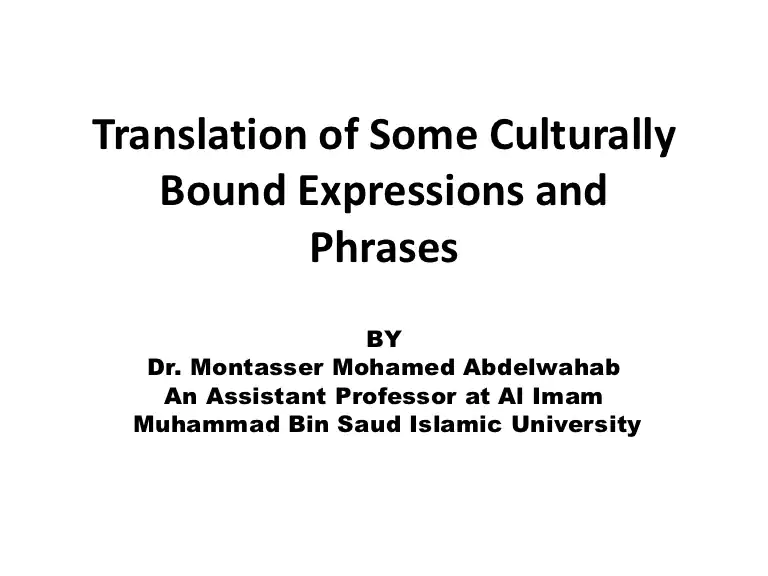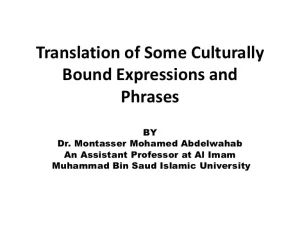Methods to translate Culture Specific Concepts
Graedler gave some procedures for translating Culture Specific Concepts (CSCs). These are as follows:
- Making a new word.
- Explain the meaning of SL expression to translate it.
- Prevent the SL term.
- Option in the TL that is similar to or is related to the SL term.
Culture Bound Terms (CBTs) are defined as the term that refers to the institutions, concepts and personnel that is specified to the SL culture. Harvey puts forward the four main techniques for translating the CBTs. These are as follows:
- Functional Equivalence: It refers to the use of referent in the TL whose function is same as of SL (Source Language) referent. Harvey writes, authors are divided on the basis of this technique. Weston says that it is the ideal technique of translation. Sarcevic describes it as misleading and it should be avoided.
- ‘Linguistic Equivalence’ or ‘Formal Equivalence’: It refers to ‘word to word’ translation.
- ‘Borrowing’ or ‘Transcription’ (reproducing or transliterating the original words): it is located at the end of SL-oriented techniques. If the term is described in the context or is formally transparent, it can be used alone. In other cases, especially where the knowledge of SL is not presumed by the reader, transcription is completed by a translator’s note or explanation.
- Self-explanatory or Descriptive translation: It uses general terms (excluding CBTs) to convey their meaning. It is suitable for a broad variety of contexts and where formal equivalence is clearly considered. In a text that is aimed at the special reader, it may be useful to add the original term to evade from ambiguity.
Newmark proposes different procedures for translation:
- Transference: The process of transferring the SL words to TL text. It also includes transliteration and is same as the word “transcription”.
- Naturalization: Adapts the SL word to the normal pronunciation, and then to normal morphology.
- Cultural equivalent: It refers to replacing a cultural word of SL with a TL word. Though, they are not exact.
- Functional equivalent: It uses the culture neutral word, said by Newmark.
- Descriptive equivalent: The meaning of CBTs is explained in many words.
- Componential analysis: It refers to the comparison of an SL word to TL word having similar meaning but not one to one equivalent.
- Synonymy: It means that economy trumps accuracy.
- Thorough translation: The literal translation of general collocations, components of compounds and names of organizations. It is also called as a loan or calque translation.
- Shifts or transpositions: Involves change in the grammar, for instance, (i) change when the SL structure does not present in the TL, (ii) changes SL verb into the TL, (iii) SL noun group into a TL, (iv) from singular to plural and so forth.
- Modulation: Occurs when a translator originates a message of the existing text in the TL text to confirm the current norm of the TL.
- Recognized translation: Occurs when a translator uses the generally accepted or official translation of an institutional term.
- Compensation: It occurs while a loss of meaning in a part of a sentence is overcome in another part.
- Paraphrase: The CBT is explained in this procedure. The explanation is much in detail as compared with that of descriptive equivalent.
- Couplets: Occurs while combining two different procedures.
- Notes: these are additional information.
The occurrence of allusions is also a troublesome part of translations. The allusions seem to be culturally specific part of an SL. All types of allusions need to be eliminated in the translation to keep the text rich of SL for the TL audience.

